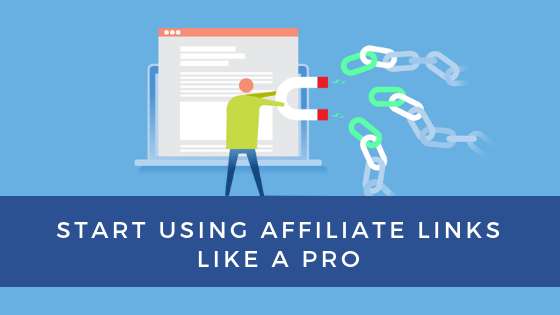Affiliate Links: Use Them Right

As soon as you have your exclusive affiliate link, you are practically all set to sprinkle it evenly throughout your content.
However, before you go ahead pasting links all over the place, better learn the best practices by heart. Here are some tips for you to optimize your own affiliate website and reap some SEO benefits from the affiliate links.
1. Add Anchors to Affiliate Links
Put affiliate links in the body of the article by making certain words or phrases clickable. Such a hyperlink would look much better than a bare link added to a page:
Try Google
Which link looks better to you?
The contextual anchor is much more appealing — it’s clear, user-friendly and looks nice, in contrast to the bare link (especially that the latter contains dynamic parameters and looks messy).
Make the anchor text* of your affiliate link descriptive and relevant to the linked source. Your users should instantly understand where they will go once they click through.
Here is a good example:
2. Affiliate Links Density Control
Balance your affiliate links density. One method of balancing the number of links you paste in your copy is to include one affiliate link per one piece of content (page, article or review). Although this is the best solution when it comes to promoting your affiliate campaigns, this is also more time consuming and work demanding than adding various affiliate links to one lengthy post.
No matter what approach you choose to follow, the main point here is not to go too heavy on the links, otherwise Google might think you are completely thin affiliate site. Find a healthy balance between monetization and user experience. Make sure you bring value and educate your visitors about the chosen topics. Put affiliate links where they make sense. A good content to links ratio would be 1 link per every 1.000 words. This rule will help you ultimately avoid keyword stuffing.
3. Keep it simple
Make your affiliate links clean and more user-friendly. Even if your affiliate link is hidden behind a relevant and descriptive anchor, it’s always a good practice to clean it up, making it even more readable and understandable for your users. Of course, you should be careful doing this because in some circumstances there is a risk that your merchant will find it harder to determine the source of traffic or the affiliate’s ID.
Links containing dynamic parameters are long and often look ugly. This can deter users from clicking them. Mainly because people fear ever-present spam. They also react negatively to promotional links.
Take a look at this example:
https://www.example.com (that’s a domain name of your affiliate platform)/product/bb2e/ links to, let’s say, a cool mens’ bag pack. But the URL isn’t descriptive at all. You can’t just look at that URL and know what is on the other side.
If we cloak this URL, it could easily look like:
https://example.com (your website’s domain name)/go/mens-bagpack and you would know just by looking at it, that it probably leads to a bag pack product.
Now you see the difference, right?
These two links lead to the same destination, and they both track the same affiliate cookie correctly. Which one looks more trustworthy to you? And which one would you prefer to click?
If you use WordPress, there is a Pretty Links plugin that makes your affiliate links more beautiful right away. Pretty link lets you use tidy links and describe them according to your preference. Apart from masking your affiliate links, Pretty Links features a hits tracker and a reporting interface where you can see a configurable chart summarizing clicks day by day – so you can use it to measure clicks from various campaigns- including emails, social media, etc.
Still watching how others make money with affiliate marketing?
Don’t watch! Start making money yourself!
4. Nofollow Affiliate Links
Another good advice which you can and should use is adding the rel=”nofollow” attribute to your affiliate links. As Google isn’t big on affiliate links, it’s a good idea to nofollow them to avoid the risk of having your site penalized. How does it work? Put simply, once you add a nofollow attribute, Google will ignore the link.
5. Using banners as links
Using banners to add links is one of the most effective ways to catch the reader’s attention. The hugest pro is that you can easily fit the banner into any place of your content.
6. Coupons and Deals
Who has never got tempted by a view of some lucrative deal while surfing on the web? They are really unresistable, you know… But they are also a great option for adding an affiliate link for the products of the concerned store.
As an affiliate marketer, you should definitely check all this techniques if you haven’t yet, and incorporate into your posting routine, the results will not disappoint you for sure.
If you are ready to start implementing these tips into your affiliate strategy on your website – do check out how to increase your traffic and influence people to buy via your tracking links.
Looking for the best affiliate programs with high payouts? You’re at the right place! We have 2000+ offers in all profitable niches.